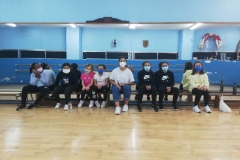Dance is a way of developing skills that appear during the growth of any child and teenagers. In addition, scientific studies have shown the effectiveness of dance as therapy to improve certain psychological problems or situations of mental and emotional instability typical of the age.
Dancing has many benefits for children and teenagers. Not only it helps to reduce and alleviate the negative feelings that are typical of a difficult stage such as adolescence, but its therapeutic purpose allows young people and children to experiment positively with the possibilities of their bodies.
In addition to promoting valuable skills for their physical, mental and emotional development, it has many advantages such as socializing, increasing creativity and strengthening self-esteem.
On a physical plane, dancing improves flexibility, coordination, endurance, balance and strength. On a psychological plane, it contributes to improving self-esteem and helps to develop social and communication skills, thus increasing self-confidence and security when it comes to showing off in public and relating to others.
Objectives:
- Encourage a healthier lifestyle. Dancing is one of the most complete forms of exercise, because it uses the whole body and helps to improve flexibility, strength and physical resistance.
- It helps to socialize, cooperate and teamwork, with the consequent improvement of social skills.
- It strengthens self-esteem and self-acceptance in the face of social and aesthetic pressures.
- It develops creativity and musical skills, hearing, rhythm and coordination. In addition, several studies have shown that improving musical skills is closely related to a good academic performance, especially in areas such as mathematics.




